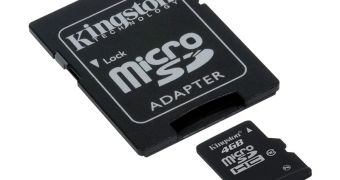It looks like the solution Samsung chose for the problem it had at the beginning of the month is working so well that other suppliers have aped the maneuver.
For those who don't know what we are talking about, demand for NAND Flash memory chip-based products has fallen significantly.
Even with the, admittedly overblown, HDD “crisis” (such as it is), flash memory failed to become as popular as chip makers had hoped.
SSDs are just too expensive and memory cards haven't benefited from the sort of adoption rate IT players wanted.
Samsung's measure consisted of controlling supply by refusing to ship cards to small-size channel distributors.
According to Digitimes, other companies enacted similar policies, causing a supply strain that, finally, led to higher ASPs (average selling prices).
Here are the numbers: around mid-May, 2 GB and 4 GB microSD cards were quoted at $1.15 (0.91 Euro) and $1.35 (1.06 Euro). Now, though, they sell for $1.60 (1.26 Euro) and $2 (1.58 Euro), respectively. That's a 40-50% recovery after about half a year of constant drops.
That leaves 16GB microSD cards as the only ones who have not gained in value over the past month. They do have a wider price range though ($4.70 - $5.40 / 3.71 – 4.27 Euro).
In the meantime, demand continues to be sluggish, contributing to the general lethargy affecting the NAND segment as a whole.
Hopes used to rest on the ultrabook segment, and their reliance on SSDs. Intel and its partners finally bringing prices down to acceptable levels might turn out badly instead of well, though.
We say this because, while an ultrabook cost-reduction meeting has been scheduled for July, one of the measures considered for implementation is the use of small HDDs instead of SSDs. This does not have any bearing on microSD cards, but it does spell trouble for the flash segment as a whole.

 14 DAY TRIAL //
14 DAY TRIAL //